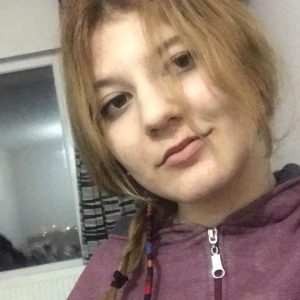Combining Cinema And Photography : Agnès Varda

Agnès Varda
Firstly, let’s talk briefly about the director of these amazing films. She is Agnès Varda, with her real name Arlette Varda. She was known as the grandmother of the new wave trend that started in France in the 1960s. She is also known for her advocacy of feminism. The films she shot with her synthetics / cinécriture theory are interdisciplinary works that bring painting, photography, installation, and literature.

”Cinema is my home. I think I’ve always lived in it.”
She was born on May,30,1928 in Brussels. Her mother was French and his father was Greek. She spent the first days of his childhood in Belgium and Sete, then went to Paris. At that time he became interested in photography. Here you can understand why her movies are like photo frames. She was a very successful photographer.
 She later met the person that she was going to marry, he is a director and his name is Jacques Demy. She had 2 children from her marriage.
She later met the person that she was going to marry, he is a director and his name is Jacques Demy. She had 2 children from her marriage.
She made her first film La Pointe Courte in 1955. She later made many documentaries and fiction films and won many awards from them. In 1990, after the death of her husband Jacques, she made the movie Jacquot de Nantes for the sake of him. She had so many films in her lifetime, she finally made her last documentary Visages Villages in 2017. She died in March,29,2019.
The Beaches of Agnès (2008)
 This documentary is Varda’s self-portrait documentary. It was awarded the Caserta Award for the best documentary in 2009. It is not just Varda’s life experiences, it is more than this. We see the memories that made Varda who she is, we actually see the points that she inspired.
This documentary is Varda’s self-portrait documentary. It was awarded the Caserta Award for the best documentary in 2009. It is not just Varda’s life experiences, it is more than this. We see the memories that made Varda who she is, we actually see the points that she inspired.
The movie almost consists of photo frames like other Varda movies. The first scene of the movie opens with Varda walking back and forth on the beach. Throughout the film, we see Varda talking and we catch remarkable lines about her life.

“If we opened people up, we’d find landscapes, if we opened me up, we’d find beaches.”

”I tried to be a joyful feminist, but I was angry.”
LE BONHEUR (1965)

In the foreground, magnificent sunflowers swept his face. In the back, at some distance, four figures approaching straight. These four figures represent the nuclear family, and indeed happiness, to us. But later in the film, you find yourself questioning whether it represents happiness or not. We see that Mozart is accompanying it as background music. This film is like a visual feast with its sparkles of color and photo frames that energize us.
Later in the film, we see an unexpected development and we find plenty of opportunities to question happiness. The movie ends just like the scene it started, but here’s the real irony.

”The pursuit of man’s happiness is endless.”
FACES PLACES (2017)
 The movie is directed by Agnès Varda and JR. It is a documentary that telling the portraits of the people they meet while walking Francis rural. We see a truck converted into a camera. It uses not only the camera but also projects the huge pictures that cover the walls of the characters they encounter to embody the interaction, so these photographs make each character who enters the documentary a representative of their own space.
The movie is directed by Agnès Varda and JR. It is a documentary that telling the portraits of the people they meet while walking Francis rural. We see a truck converted into a camera. It uses not only the camera but also projects the huge pictures that cover the walls of the characters they encounter to embody the interaction, so these photographs make each character who enters the documentary a representative of their own space.
It was nominated for the best documentary film at the 90th Academy Film Awards.

”To meet new faces, and photograph them; so they do not fall down the holes in my memory.”
SOURCES :
- Wolmart, Gregory. Film & History (03603695) , Spring2014, Vol. 44 Issue 1, p8-12, 5p
- https://mubi.com/tr/showing
- https://www.istanbulmodern.org/tr/sinema/gecmis-programlar/agns-hakkinda-her-sey_2243.html
- Dixon, Wheeler Winston. Quarterly Review of Film & Video , Jul2020, Vol. 37 Issue 5, p403-407, 5p; DOI: 10.1080/10509208.2019.1696110







